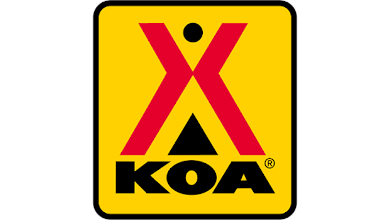Kampgrounds of America (KOA) recently released its reimagined annual Camping and Outdoor Hospitality Report, which explores how the outdoor travel landscape has changed, 2024 trends and more.
“Through a decade of consumer research and insights, KOA has carefully observed the transformation of camping and outdoor hospitality from a simple outdoor activity into something more,” the organization said. “Campgrounds have welcomed more than 41 million first-time camping households since the first survey was conducted in 2014 as consumer desires for immersive experiences, modernized amenities and accommodation types have shifted.”
2024 Camping Intent & Travel Experiences
In the past decade, leisure travel preferences have shifted significantly toward camping and hospitality, currently showing exponential growth in its popularity. The 2024 outlook is one out of every three leisure trips for consumers includes camping — similarly optimistic as more travelers seek unique ways to explore the outdoors. This year, travelers want to disconnect in the great outdoors simply by slowing down and experiencing nature and natural events.
Key findings for the 2024 outdoor travel season include:
-
- A noticeable shift in health and wellness travel choices, with 79% of travelers planning to incorporate forest immersion, meditation, yoga and/or mindful strolls into their trips as an effort to “slow down.”
- Top travel goals for 2024 include slowing down and enjoying experiences (57%), travel experiences that allow campers to “recharge” (50%), having a variety of experiences (41%), checking off several items on a travel bucket list (37%) and making spontaneous plans (34%).
- Campers are strongly interested in natural attractions, and campers indicated top travel experiences for 2024 include natural events (50%), food tourism (31%), visiting small towns (29%) and combining work and leisure travel (25%).
- More than half of campers report they are more likely to continue camping, a 15% increase over 2023.
“Through our decade of research, we’ve seen camping evolve from simply being considered an outdoor activity to becoming a formidable segment of the travel marketplace,” said Toby O’Rourke, president and CEO of KOA. “Despite all the changes over the last 10 years, one thing remains constant: even more people see the importance of connecting with nature. Heeding the call, outdoor hospitality offers countless ways for a broad range of travelers to have one-of-a-kind experiences with those who matter most.”
10 Years of Transformation
In the last decade, total camping households increased by 23% and active camping households surged by 68%. Camper demographics have become younger and more diverse during that time, underscoring camping’s popularity among a wide range of individuals and solidifying its importance in the greater travel landscape. Prior to 2019, camping brought in more than 2 million new households annually, and since the COVID-19 pandemic, that number has grown significantly, averaging 4.4 million new campers annually.
Key shifts and findings over the last decade include:
-
- Glamping emerged as a new camping experience that brought in 15.7 million entrants into outdoor hospitality in the past five years alone.
- Since 2014, there has been a 98% increase in the number of households that camp three or more times annually.
- Close to half of campers in the last two years are under 35 compared to just 30% of total campers in 2014.
- 39% of campers are non-white versus 23% 10 years ago. Plus, there has been a 54% increase in camping by people of color.
Growth of Outdoor Hospitality
Outdoor hospitality has become an important and distinct category in the travel industry over the last decade. KOA offers guest experiences, glamping accommodations, self-guided recreation opportunities and experienced staff members who are actively engaged in outdoor activities and experiences.
The KOA Camping and Outdoor Hospitality Report showcases how outdoor hospitality has evolved:
-
- The human element is a significant factor in outdoor hospitality experience, with 87% of leisure travelers agreeing that outdoor hospitality must incorporate human interaction.
- Travelers define outdoor hospitality as a majority of time being spent outdoors (50%), the presence of camping amenities such as fire pits and outdoor seating areas (48%) and accommodations that reflect traditional camping amenities such as tents or RVs are present (43%).
- Though it was added to the Oxford English Dictionary in 2016, glamping was not a household word in 2014 and in 2017, a survey found only three out of 10 campers had awareness of the word. The past few years have shown a boom in the trend, which has revitalized outdoor hospitality.
“As guest expectations have evolved over time, so has our approach to the outdoor hospitality experience,” said O’Rourke. “KOA is proud to be a leader in outdoor hospitality, offering a unique blend of outdoor activities with the comfort and services of traditional hospitality at our more than 500 campgrounds in North America.”
Click here to view the full 2024 Camping and Outdoor Hospitality Report.
